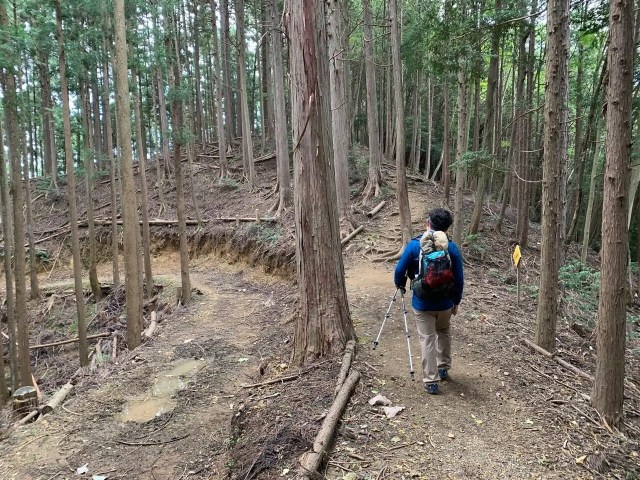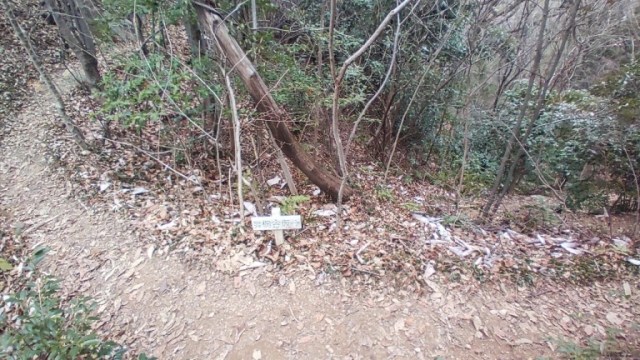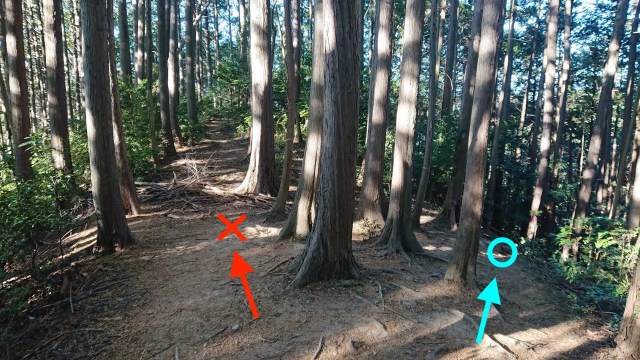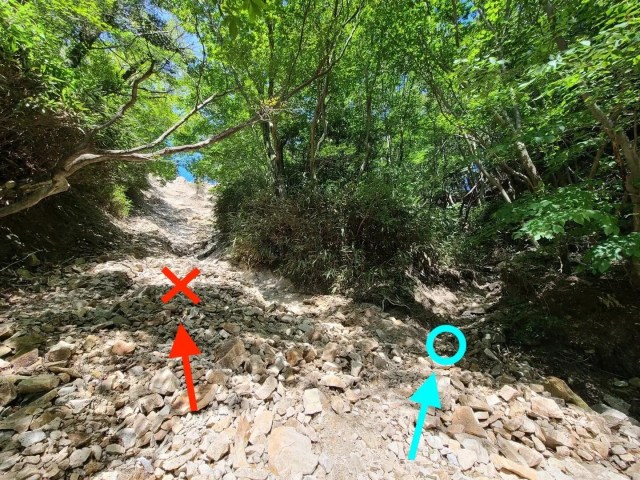
Data analysis highlights where hikers are most likely to get a little too far off the beaten path.
As an island nation, Japan has plenty of beaches that people flock to in the summer, but the country’s mountains are a popular destination for outdoorsy types too. Especially now that we’re out of the rainy season, more and more people are going to be hitting the hiking trails, but there’s one thing to watch out for: some mountains are really, really easy to get lost on.
Japanese hiking app Yamap (a mashup of “yama,” the Japanese word for “mountain,” and “map”) recently finished an analysis of its user submitted data, sifting through which mountain trails had been most marked as easy to get lost on as well as which of those warnings were rated as the most useful by others. From that, they put together a list of the five most confusing, easiest-to-get-lost spots on mountain trails in Japan, so let’s take a look at the results, and maybe take some notes, so that we don’t get lost ourselves.
1. Kakamigahara Alps Gongenyama – Kiriyazaka (Gifu Prefecture)
Out of the top five, this spot on the Gongenyama-to-Kiriyazaka route is the only one where you’ll see a sign. That sign looks to be lower than knee-high, though, with only some small, faded lettering letting you know that you need to go right for the walking trail to Kiriyazaka. Head left, and the trail will dead end as the mountain goes vertical for a full-on climbing section.
2. Tenkakusan – Aganonoatama (Saitama Prefecture)
OK, no more signs from here on out! This Saitama trail gets pretty counterintuitive this spot where continuing on the nice flat, broad path to the left leads you to the steep edge of the mountain. Instead, you want to veer right, down that narrow section where your feet will temporarily be at a 45-degree angle. Why no sign here? Apparently the pink tape wrapped around that one tree trunk (just to the right of the blue circle added to the photo) is supposed to be enough to guide you in the right direction.
3. Nenogongen – Mutsuishinoatama (Saitama Prefecture)
Now there’s not even marking tape, but if you want to make it to the end of the trail, you need to hang a left at this seemingly random spot.
4. Gozaishodake – Buheitoge (Shiga and Mie Prefectures)
Once again, you pretty much have to go against all your instincts here. The left-side path of least resistance will eventually meet up with the rest of the trail, but it’s a steep, slippery incline that’ not officially part of the route, whereas the easier-to-navigate, but harder-to-notice, path on the left is the one you’re supposed to go on.
5. Takahatayama – Nakanosawanoatama (Saitama Prefecture)
And last, here we’ve at least got two clearly identifiable paths, but no indication as to which one we’re supposed to take. In this case, right is right, as taking the left path will send you off course.
Obviously, part of Yamap’s goal in releasing these rankings is to encourage people to use their app so that they don’t get lost, but they also hope to encourage local forestry services to add clearer trail markings at these points. Yamap put together a similar ranking last year, and says that increased signage resulted in no cases of lost hikers on those trails. For the time being, though, it’s probably a good idea to make sure your phone has a full charge before you hit the trails, not just so that you can take pictures, but so that you can check your location too.
Related: Yamap
Source, images: PR Times
● Want to hear about SoraNews24’s latest articles as soon as they’re published? Follow us on Facebook and Twitter!
[ Read in Japanese ]





 Mt. Fuji is officially closed for the year
Mt. Fuji is officially closed for the year Hiking restrictions result in huge drop in climbing accidents, with zero on Mt. Fuji
Hiking restrictions result in huge drop in climbing accidents, with zero on Mt. Fuji Barricades placed on Mt. Fuji as mountain officially closes because of coronavirus【Video】
Barricades placed on Mt. Fuji as mountain officially closes because of coronavirus【Video】 Three people die on Mt. Fuji less than 24 hours after official start of climbing season
Three people die on Mt. Fuji less than 24 hours after official start of climbing season Human traffic jam on Mt. Fuji shows why weekdays are the best days to hike the symbol of Japan
Human traffic jam on Mt. Fuji shows why weekdays are the best days to hike the symbol of Japan Japan’s new difficult-to-drink-from beer glass protects your liver, but it’s a brutal experience
Japan’s new difficult-to-drink-from beer glass protects your liver, but it’s a brutal experience Demon Slayer: Kimetsu no Yaiba gets new roller coaster attractions and food at Universal Studios Japan
Demon Slayer: Kimetsu no Yaiba gets new roller coaster attractions and food at Universal Studios Japan Come play hide-and-seek on a deserted Japanese island this August and November
Come play hide-and-seek on a deserted Japanese island this August and November Hello, cosmetics! Clinique teams up with Hello Kitty this summer for first-time collaboration
Hello, cosmetics! Clinique teams up with Hello Kitty this summer for first-time collaboration How to order snacks on a Shinkansen bullet train in Japan
How to order snacks on a Shinkansen bullet train in Japan New Pokémon ice cream, dessert drinks, and cool merch coming to Baskin-Robbins Japan【Pics】
New Pokémon ice cream, dessert drinks, and cool merch coming to Baskin-Robbins Japan【Pics】 New Nintendo Lego kit is a beautiful piece of moving pixel art of Mario and Yoshi【Photos】
New Nintendo Lego kit is a beautiful piece of moving pixel art of Mario and Yoshi【Photos】 McDonald’s adds a new Cheese Bacon Potato Pie to its menu in Japan for a limited time
McDonald’s adds a new Cheese Bacon Potato Pie to its menu in Japan for a limited time To combat declining birth rate, Japan to begin offering “Breeding Visas” to foreigners
To combat declining birth rate, Japan to begin offering “Breeding Visas” to foreigners Real Buddhist monk plays Super Mario Bros., recites prayers every time he kills an enemy【Video】
Real Buddhist monk plays Super Mario Bros., recites prayers every time he kills an enemy【Video】 Nintendo history you can feel – Super NES, N64, and GameCube controllers become capsule toys
Nintendo history you can feel – Super NES, N64, and GameCube controllers become capsule toys “The most Delicious Cup Noodle in history” – Japan’s French Cup Noodle wins our heart【Taste test】
“The most Delicious Cup Noodle in history” – Japan’s French Cup Noodle wins our heart【Taste test】 Starbucks releases a cute Frappuccino and Unicorn Cake…but not in Japan
Starbucks releases a cute Frappuccino and Unicorn Cake…but not in Japan Kyoto Tower mascot termination reveals dark side behind cute Japanese characters
Kyoto Tower mascot termination reveals dark side behind cute Japanese characters McDonald’s Japan’s Soft Twist Tower: A phantom ice cream only sold at select branches
McDonald’s Japan’s Soft Twist Tower: A phantom ice cream only sold at select branches Yabai Ramen: What makes this Japanese ramen so dangerous?
Yabai Ramen: What makes this Japanese ramen so dangerous? Finally! Nintendo Japan expands Switch 8-bit controller sales to everybody, Online member or not
Finally! Nintendo Japan expands Switch 8-bit controller sales to everybody, Online member or not Japanese government wants to build luxury resorts in all national parks for foreign tourists
Japanese government wants to build luxury resorts in all national parks for foreign tourists 10 things you should buy at 7-Eleven in Japan
10 things you should buy at 7-Eleven in Japan Studio Ghibli releases anime heroine cosplay dresses that are super comfy to wear
Studio Ghibli releases anime heroine cosplay dresses that are super comfy to wear Woman charged for driving suitcase without a license in Osaka
Woman charged for driving suitcase without a license in Osaka Studio Ghibli unveils My Neighbour Totoro miniature house model
Studio Ghibli unveils My Neighbour Totoro miniature house model Kyoto experiencing problems with foreign tourists not paying for bus fares, but not on purpose
Kyoto experiencing problems with foreign tourists not paying for bus fares, but not on purpose Fighting mild hunger with a Japanese soda that turns into jelly in the stomach【Taste test】
Fighting mild hunger with a Japanese soda that turns into jelly in the stomach【Taste test】 Studio Ghibli’s Howl’s Moving Castle tapestry unveiled in Japan for first time
Studio Ghibli’s Howl’s Moving Castle tapestry unveiled in Japan for first time McDonald’s new Happy Meals offer up cute and practical Sanrio lifestyle goods
McDonald’s new Happy Meals offer up cute and practical Sanrio lifestyle goods Sales of Japan’s most convenient train ticket/shopping payment cards suspended indefinitely
Sales of Japan’s most convenient train ticket/shopping payment cards suspended indefinitely Sold-out Studio Ghibli desktop humidifiers are back so Totoro can help you through the dry season
Sold-out Studio Ghibli desktop humidifiers are back so Totoro can help you through the dry season Japanese government to make first change to romanization spelling rules since the 1950s
Japanese government to make first change to romanization spelling rules since the 1950s Foreigner’s request for help in Tokyo makes us sad for the state of society
Foreigner’s request for help in Tokyo makes us sad for the state of society Ghibli founders Toshio Suzuki and Hayao Miyazaki contribute to Japanese whisky Totoro label design
Ghibli founders Toshio Suzuki and Hayao Miyazaki contribute to Japanese whisky Totoro label design Doraemon found buried at sea as scene from 1993 anime becomes real life【Photos】
Doraemon found buried at sea as scene from 1993 anime becomes real life【Photos】 Tokyo’s most famous Starbucks is closed
Tokyo’s most famous Starbucks is closed Princesses, fruits, and blacksmiths: Study reveals the 30 most unusual family names in Japan
Princesses, fruits, and blacksmiths: Study reveals the 30 most unusual family names in Japan Mt. Fuji is now open again following 2020 shutdown
Mt. Fuji is now open again following 2020 shutdown Search for live-streamer who fell from Mt. Fuji finds badly damaged corpse half-mile below peak
Search for live-streamer who fell from Mt. Fuji finds badly damaged corpse half-mile below peak Kirishima Geopark: Trekking through a bonsai forest in the clouds 【Photos】
Kirishima Geopark: Trekking through a bonsai forest in the clouds 【Photos】 Shiratani Unsuikyo: The breathtaking anime setting where Princess Mononoke was born
Shiratani Unsuikyo: The breathtaking anime setting where Princess Mononoke was born Our team turns into old men on Respect for the Elderly Day with the magic of A.I. photo editing
Our team turns into old men on Respect for the Elderly Day with the magic of A.I. photo editing Mount Fuji plans to start charging compulsory fee to climbers
Mount Fuji plans to start charging compulsory fee to climbers Love Japanese hot springs? At Nakadake Onsen in Hokkaido, you can dig your own!
Love Japanese hot springs? At Nakadake Onsen in Hokkaido, you can dig your own! Chewbacca and Darth Vader show up in the mountains of Japan thanks to cosplaying outdoorsman
Chewbacca and Darth Vader show up in the mountains of Japan thanks to cosplaying outdoorsman The only path to this Nagasaki Shinto shrine gets swallowed by the sea every day【Video】
The only path to this Nagasaki Shinto shrine gets swallowed by the sea every day【Video】 Free Wi-Fi is coming to Mt. Fuji this summer
Free Wi-Fi is coming to Mt. Fuji this summer Draw-your-own fox charms are one of the highlights of Kyoto’s famous Fushimi Inari Shrine
Draw-your-own fox charms are one of the highlights of Kyoto’s famous Fushimi Inari Shrine When the pandemic is over…Beautiful photos of places Japan travelers want to visit after corona
When the pandemic is over…Beautiful photos of places Japan travelers want to visit after corona 10 gorgeous, must-visit places to see the autumn leaves in Japan
10 gorgeous, must-visit places to see the autumn leaves in Japan Mount Fuji has become so congested with tourists that it has reached breaking point
Mount Fuji has become so congested with tourists that it has reached breaking point
Leave a Reply